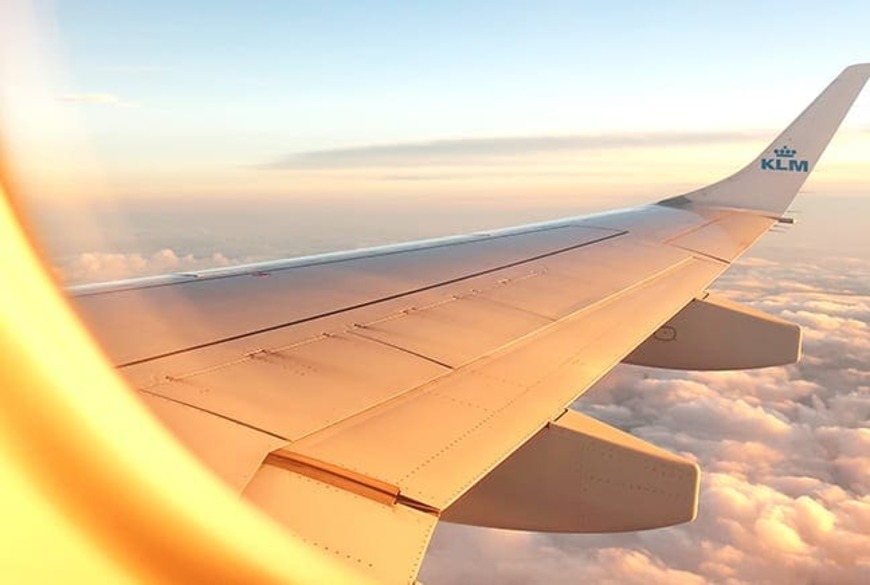Health tips for a flight...
Top tips on how to stay healthy on a flight Swollen limbs, a sore throat, headaches, heavy legs, dehydration, dizziness and exploding ear drums. You’ve already dealt with the prolonged stress of airport security and inflated prices but now you have a tougher task, keeping yourself healthy and fit for your holiday at 8,000 ft in a compressed metal tube full of processed air and hundreds of people. The symptoms of flying are enough to make you want to stay at home but by following these healthy tips, there is no reason you can’t walk off the plane feeling as energetic as when you stepped on. Exercise
- Long flights can lead to leg clots and deep vein thrombosis or ‘economy class syndrome’ because you’re spending hour after hour sitting in a cramped seat, which is why it is crucial that you keep yourself active in these confined conditions.
- Periods of immobility increase the risk of DVTs which is why you want to create a situation where your legs are moving and the muscles are contracting. Your calves are often called your second heart because of the role they play in helping pump venous blood. By contracting your calve muscles such as tapping your feet instead of doing deep knee bends, you are creating movement in your shins, thighs and even in your hip joint!
- Also, the CAA recommends walking up and down the aisles and doing small exercises if possible to help your blood flow and avoid leg clots.
- Avoid crossing your legs and try to change your position regularly to keep from seizing up.
- Many airlines provide a variety of in-flight exercises to perform in your seat and advice that will leave you arriving at your destination as fresh as the proverbial daisy.
- Compression stockings also help prevent blood collecting in the lower limbs and uncomfortable swelling. Combine this with loose fitting clothing in breathable fabrics which won’t constrict veins or blood flow and keep you from overheating.
- Why not try one of these handy exercises that you can perform in your seat? ‘The Revolver’ consists of lifting both of your feet off the floor and rotating them in circles. Or ‘The Knees Up’ exercise, which consists of leaning forwards slightly, clasping both hands around your knee and lifting it to your chest. Hold for 15 seconds, and then do the other leg.
- Following on from the exercises, another easy way to encourage movement is to keep drinking water because you will have to keep getting up to use the lavatory.
- Pratima Raichur, a chemist and aesthetician, advises against drinking ice-cold or cold water due to Ayurvedic principles. These principles state that being the air parallels Vata, which is a particular Ayurvedic constitution that is dry and does not like the cold. With Vata energy already exaggerated in the cabin, it’s important to make choices that decrease Vata. Decline carbonated beverages that are full of gas and favour warm liquids such as tea.
- Another tip to keeping yourself hydrated in the air is to carry water in a spray bottle to spray directly onto your face mid-flight.
- Avoid alcohol at all costs if you want to stay healthy and hydrated. Alcohol exacerbates symptoms as it interferes with your cells’ metabolism, making them less efficient at absorbing oxygen. It can also cause you to dehydrate faster!
- A good indication of adequate hydration is having smooth, hydrated lips and it is advised to have one or two cups of water per hour to keep hydrated.
- It is advised that you should eat as little and light as possible once in flight because it is harder to digest big meals in ultra-Vata conditions.
- Instead plan to eat a big meal before you board the plane, to avoid feeling peckish and irritated mid-flight.
- Take a pass on cold foods, such as raw salads and favour warm nourishment to combat that pesky Vata.
- Fennel seeds are also good for digestion and can be easily stored in your hand luggage…
- You can take any food on the plane, just as long as there are no liquids or pastes – sadly this means no hummus, nut butters or pesto but anything else is great.
- Avoid sugar-laden food and drink, as from the Chinese perspective; sugar creates dampness and phlegm, which can lead to an environment where bacteria and viruses thrive.
- Avoid plane food and the inevitable bloated feeling by packing your own lunch/dinner, packed full of all your favourite healthy snacks. Make sure to also bring double the amount of food because although it sounds weird, if the plane is delayed and everyone around you is enjoying their plane food, it will drive you up the cabin wall!









